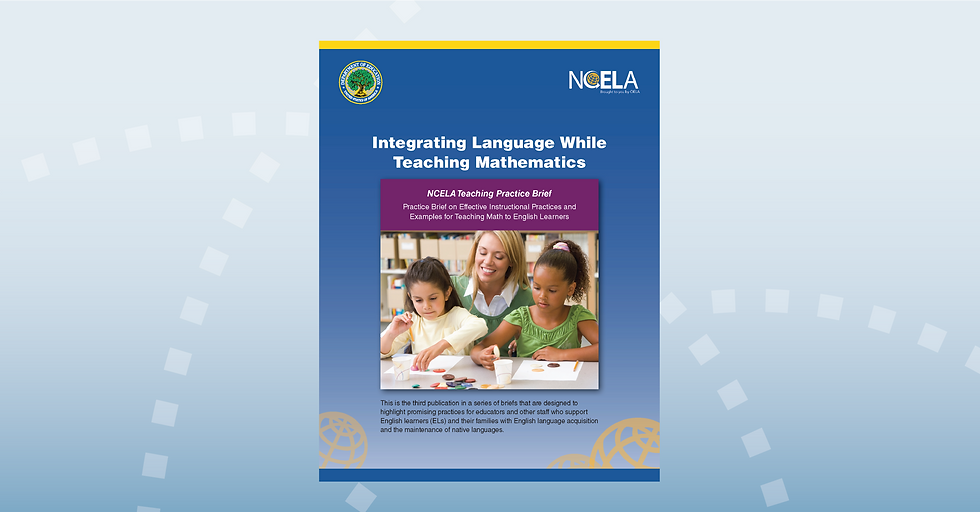Engage English Learners in Integrating Oral and Written Communications in Mathematics
- Patricia Lopez-Hurtado

- May 9, 2022
- 2 min read
By Haiwen Chu and Leslie Hamburger

To best serve their English Learners, it is critical that teachers approach their language development as a result of—not a prerequisite for—learning of important mathematics. Such language development will include both oral and written modes as students speak, listen, read, and write, all as they learn new mathematical ideas and practices. Rather than treat these modes of communication as discrete and compartmentalized for English Learners, quality learning integrates oral and written communication.
One such approach uses solving carefully selected math problems for different small groups in order to support them in sharing their ideas with the whole class. For instance, imagine that you are teaching a 9th grade mathematics class that is learning about different kinds of functions. You divide the students into different groups, with each group specializing on one type of function. In those groups, students create a collaborative poster showing what they think is their best model. A collaborative poster has each student assigned a different color marker, which they will use exclusively as they contribute to a shared poster that will incorporate writing and other selected mathematical representations. Given the constraint of the colors, students in each group will need to negotiate orally to create a quality product. Careful specification of the elements of the poster (such as examples, real-world scenarios, non-examples, and selected representations) will offer students focus as well as common threads to compare across different groups.
Afterwards, students conduct a gallery walk of the posters generated by the peers in their class to compare-and-contrast the different function types. English Learners and peers from their small groups may also work together to prepare a small presentation of the posters ahead of time. This setup will allow English Learners to participate in sustained and structured discourse with peers. Giving English Learners ample time to craft their responses will deepen the quality of what they have to say, as they will have the time to rehearse their answers in small groups, instead of having to individually think of a response on the spot. After these experiences, students write individual reflections to synthesize what they have observed across different posters and to further elaborate upon how their original function offer examples of the ideas they have explored.
Additional approaches and resources regarding this practice are explored in the full “Integrating Language While Teaching Mathematics” brief. Click here to learn more.



Comments